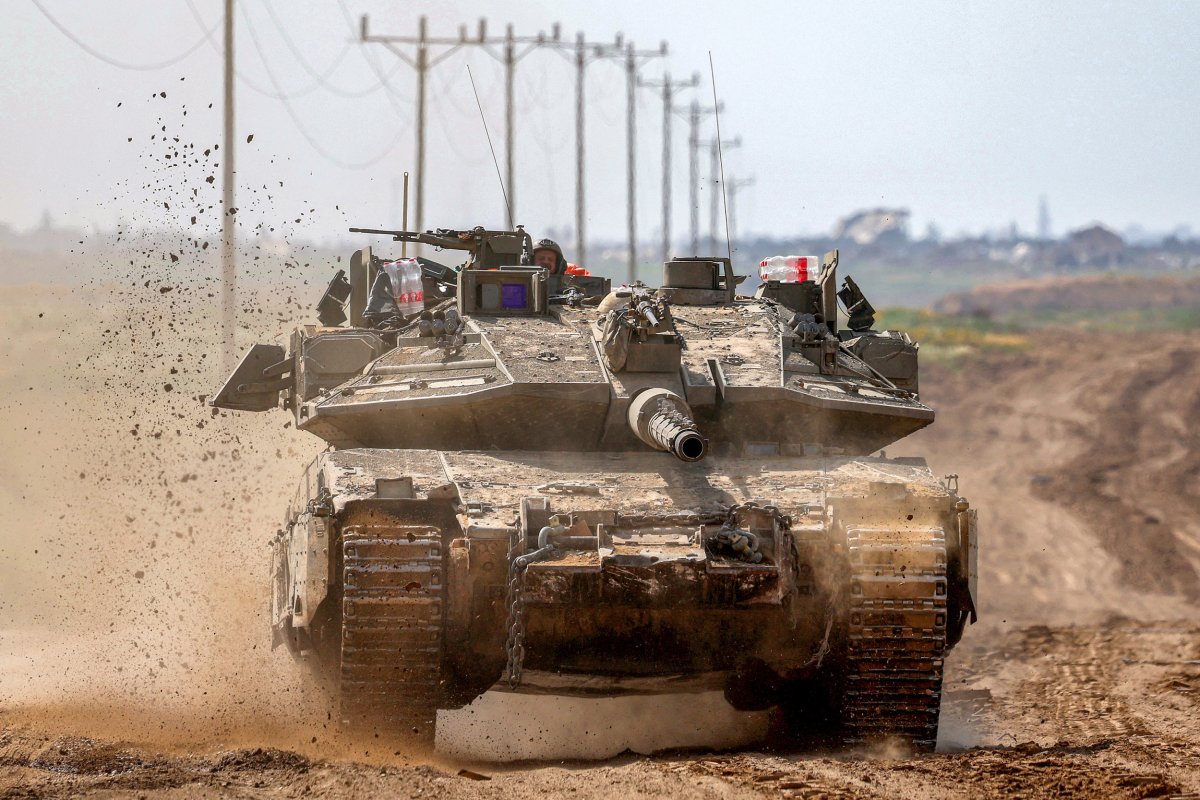Thirty-thousand Palestinians killed by Israel in Gaza. It's a number you hear everywhere when talking about Israel's war against Hamas, and it is pointed to as the reason Israel must commit to a ceasefire.
President Joe Biden recently said: "You can't have another 30,000 Palestinians dead as a consequence of going after (Hamas)." Meanwhile, WHO Director-General Tedros Adhanom Ghebreyesus posted on X that "the death toll in Gaza has surpassed 30,000—a large majority women and children... This horrific violence and suffering must end. Ceasefire."
The fact that the number comes from Hamas makes no difference to any of these world leaders, even though none of them would ever think of quoting al Qaeda or ISIS about their own death tolls during past American or British operations. In fact, many publications merely refer to the Gaza Health Ministry as if it was an independent agency without an agenda of its own.
But it does.

The job of the ministry is not to help Gazans, but rather to supply numbers that suit a terrorist regime in battle for the world's hearts and minds. Within minutes of any Israeli attack, the ministry, knowing that it will be immediately cited by media and world leaders, is ready with numbers of the injured and the dead, reaching into a hat for the figures, rather than doing the hard job of getting the facts through investigation of the scene. On the occasions when these numbers are checked, it is unsurprising that they come out on the high side—to say the least.
The credibility of Hamas's figures crumbles under scrutiny. They claim, for example, that 70 percent of the dead are children and women, even though around a third of the 30,000 are acknowledged to be combatants, Hamas fighters.
But what about noncombatant males? Were none killed in the fighting or is Hamas simply saying that there are no men in Gaza who are not fighters? Of course, that's not possible. What Hamas really wants to do—by claiming that those killed and injured were mostly innocent women and children—is to gain sympathy of the world, and draw condemnations of Israel.
There's no denying that killing any innocent person, regardless of gender or age, is horrible, but accuracy matters in the all-important war for public opinion.
And why are these Hamas-generated numbers automatically believed when the credibility of Israeli sources—that 12,000 of the dead are terrorist fighters—are denied. Even when it comes to the atrocities of Oct. 7 themselves, there is doubt. The facts of Hamas' sexual violence—even necrophilia—was documented by the terrorists themselves, but unlike the Gaza health ministry's claims, they are often disbelieved. Even the U.N. official charged with investigating these crimes tried to minimize them, mentioning the injury caused in a just war in the next breath.
War is cruel; that is the definition of war. It is an unpleasant fact of combat, that civilians are always caught in the crossfire. But unlike Israel's enemies, the Israel Defense Forces, have a code of conduct that works to ensure the fewest civilian casualties possible.
However it may sound to civilian ears, the fact is that even if you take the Hamas numbers at face value, Israel is fighting this threat with far more care than is the norm. When looking at the Hamas numbers and the IDF numbers, the combatant to civilian death ratio in Gaza is less than 1:2. In other words, for every combatant killed, fewer than two civilians are killed. While every loss of civilian life is tragic, with this ratio, Israel is achieving something remarkable on the Gaza battlefield.
As a point of reference, according to the United Nations, civilians usually make up around 90 percent of casualties in war.
The IDF's actions in Gaza are unparalleled. Israeli soldiers are confronting an unprecedented form of urban warfare, where civilian infrastructure is weaponized, and tunnels snake beneath otherwise unremarkable neighborhoods. Despite these challenges, Israel maintains a remarkably low collateral damage rate.
These facts are met with deafening silence from the world's leaders. They condemn Israel, accuse it of genocide and clamor for a ceasefire—actions that bolster Hamas's grip on power and ensure that it will continue to rule the Gaza Strip. They are asking of Israel something that they would never ask of themselves.
It's a double standard uniquely reserved for Israel. Allowing Hamas to endure is tantamount to conceding victory to terror. Advocating for a ceasefire while falsely branding Israel as genocidal serves only to embolden Hamas. Refusing to acknowledge Israel's data while embracing the fabrications of a terrorist regime is nothing short of surrendering to Hamas' narrative.
We must ask ourselves why it is that so many around the world prefer the fabrications of Hamas to the facts to be found on the ground. There is no answer that is satisfactory.
Yaakov Katz is a senior fellow at JPPI, a global think tank for the Jewish people, and the author of Shadow Strike: Inside Israel's Secret Mission to Eliminate Syrian Nuclear Power and Weapon Wizards: How Israel Became a High-Tech Military Superpower.
The views expressed in this article are the writer's own.
Uncommon Knowledge
Newsweek is committed to challenging conventional wisdom and finding connections in the search for common ground.
Newsweek is committed to challenging conventional wisdom and finding connections in the search for common ground.
About the writer
To read how Newsweek uses AI as a newsroom tool, Click here.








